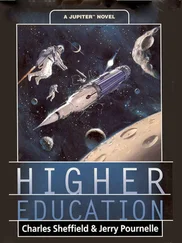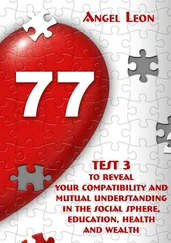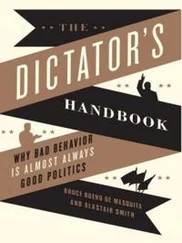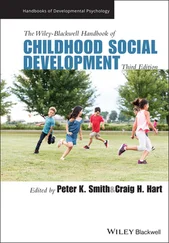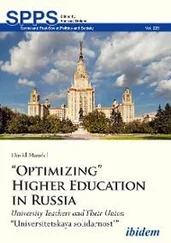(Student 3, Year 2 of project)
In a formal curriculum setting, several of these issues could have been addressed with staff support to help manage group challenges and help provide inspiration for action. However, in the context of the project being entirely student‐led and centered around their own private time and living spaces, any communication of difficulties and requests for support needed to be student driven.
The interviews with students demonstrated little reflection on learning beyond surface level knowledge and skill development. A lack of reflection in activism has the danger of being labeled as “naive activism,” devoid of reflection and purpose (Costa et al. 2021b). Within the formal curriculum, formal reflective assessment, scaffolded by training in reflective and critical thinking, may have helped students to develop further as true activist learners.
Yet, if activist learning is situated firmly in the formal curriculum, this undoubtedly will have its challenges. Student 2, who expressed the most externally focused activist goals for the project, saw a value to the project in being:
a place to make mistakes.
(Student 2, Year 2 of project)
A project for academic credit does not leave that same space for mistakes and failure or for unplanned and spontaneous experimentation. Requiring activism of students in a course, inherently requires risk for the students (Bubriski and Semaan 2009; Ludlow 2010). One could argue that reflective assessments in the formal curriculum, could provide the opportunity for failure where the assessment is based on reflection rather than the project outcome itself, yet failure that takes the form of diminishing interest and motivation and burnout – real challenges in activist projects – would undoubtedly impact on a credit‐bearing assessment. Student activist projects clearly come with challenges for the students involved. Activism located in the informal curriculum at least allows students to step away from projects if the pressures become too great, although this could compound pressures on other students still committed to the project.
Another disadvantage of activist learning in the informal curriculum is the potential for cliques to form (Briggs et al. 2019), making it difficult for new students or students with different backgrounds or divergent interests to engage with projects. This is likely specifically heightened for the SSH, because it takes place in a private home. Although the SSH became a hub for student sustainability activism, debate, and discussion, it is likely that this was at the exclusion of other individuals and groups, who did not feel comfortable entering this private space. Table 2.2summarizes some of the advantages and disadvantages of promoting activist learning through the formal, non‐formal, and informal curriculum.
Table 2.2 Summary of advantages and disadvantages of promoting activist learning through formal, non‐formal, or informal curricula.
|
Advantages |
Disadvantages |
| Formal curriculum |
Staff support to help students through a range of issuesOpportunity for formal reflection to enable engagement with deeper systemic issues and enhance articulation of learningEasier to ensure continuity of project(s) (where this is desirable)Easier to develop and maintain trusted relationships with external stakeholdersReduces competing time pressures for students as contributes to academic creditCan be more inclusive of diverse participantsMay be an easier entry point of activism for some students |
Difficult to allow failure in the ways associated with real‐world activismIf projects are staff‐initiated projects may be less meaningful to students reducing “motive fulfillment”Creates a greater focus on individual grades, rather than community gains or project outcomesStudents may still not develop agency to drive their own projects if relying on staff support |
| Non‐formal |
Can include requirements for reflectionInclusive of diverse participantsIncludes some staff supportMay be an easier entry point of activism for some studentsVoluntary nature of opportunities mean students will be motivated by projectLittle implication of failure (to student) |
Reduces student agencyStudents may still not develop agency to drive their own projects if relying on staff supportRequires opportunities to be developed which are of interest to diverse studentsOpt‐in and might not interest/impact large numbers of students |
| Informal curriculum |
Enables creativity and agency of students to act on their own inspirationProvides a space for failure and experimentationAllows students to disengage if needed for their own well‐beingReliance on peer support and learningPotential for more working in a more genuinely collaborative way, in contrast to the sometimes more individualized, competitive ethos of formal education |
Can be cliquey and exclude more diverse participantsMight involve more limited reflection, and more surface level learningMight lack support systems if students face difficultiesStudents might have difficulty navigating systems andReliance on peer support and learning |
Where does this leave us in thinking about whether activist learning belongs in the formal or informal curriculum, and what can we learn about how we as educators and ESD practitioners can support activist learning?
Even within the formal curriculum, activist learning can take place across a spectrum from more staff‐led to more student‐initiated projects, each of which will have their place depending on the intended learning outcomes, and student level and background. Dewey's four conditions to maximize the educative potential of inquiry‐based learning requires activities: (i) to generate interest in the learner, (ii) to be intrinsically worthwhile to the learner; (iii) to present problems that awaken new curiosity and create a demand for information; and (iv) to cover a considerable time span and foster development over time (Bringle and Hatcher 1999:181). These conditions suggest that it is important to ensure student interest, which may help with more student‐initiated projects. More staff‐led projects run the risk of lower levels of “motive fulfillment,” and less alignment between projects and students' ability to achieve their personal goals (Covitt 2002), compared to more student‐led projects. Quality service learning has been described as including choice for students, as well as opportunities for meaningful action, with research suggesting that service learning designed by teachers can have limited impact on students' intentions of motive fulfillment (Covitt 2002). The formal curriculum can also lead to an individual, grade focus, rather than on broader, community, and change‐focused aims (Ludlow 2010). Even within the same class, the diversity of students may mean one side of the spectrum between staff or student‐initiated projects may be more appropriate for some students than others. Students could be given the option of a self‐initiated project or a predesigned project or a choice of projects. It is conceivable that the SSH project could have been developed within the formal curriculum if the students had been given the freedom within their curriculum to initiate such a project.
The formal curriculum followed by the students involved in the introduction of the SSH project has a strong element of reflective learning as well as critically reflective discussion about sustainability issues, with the hope that this would develop a habit of reflection and criticality in all parts of their lives. Yet, at least in the interviews, there was limited evidence of reflection or critical thinking about broader sustainability issues (although the interviews might not have teased out deeper thinking that might have been occurring). Consideration of different ways in which reflective and critical thinking is developed in the formal curriculum could support this in informal curriculum learning, for example by introducing clear and explicit models of reflective and critical thinking that could be applied to projects, as well as through case studies demonstrating where these approaches are applied in the real world of activism.
Читать дальше

